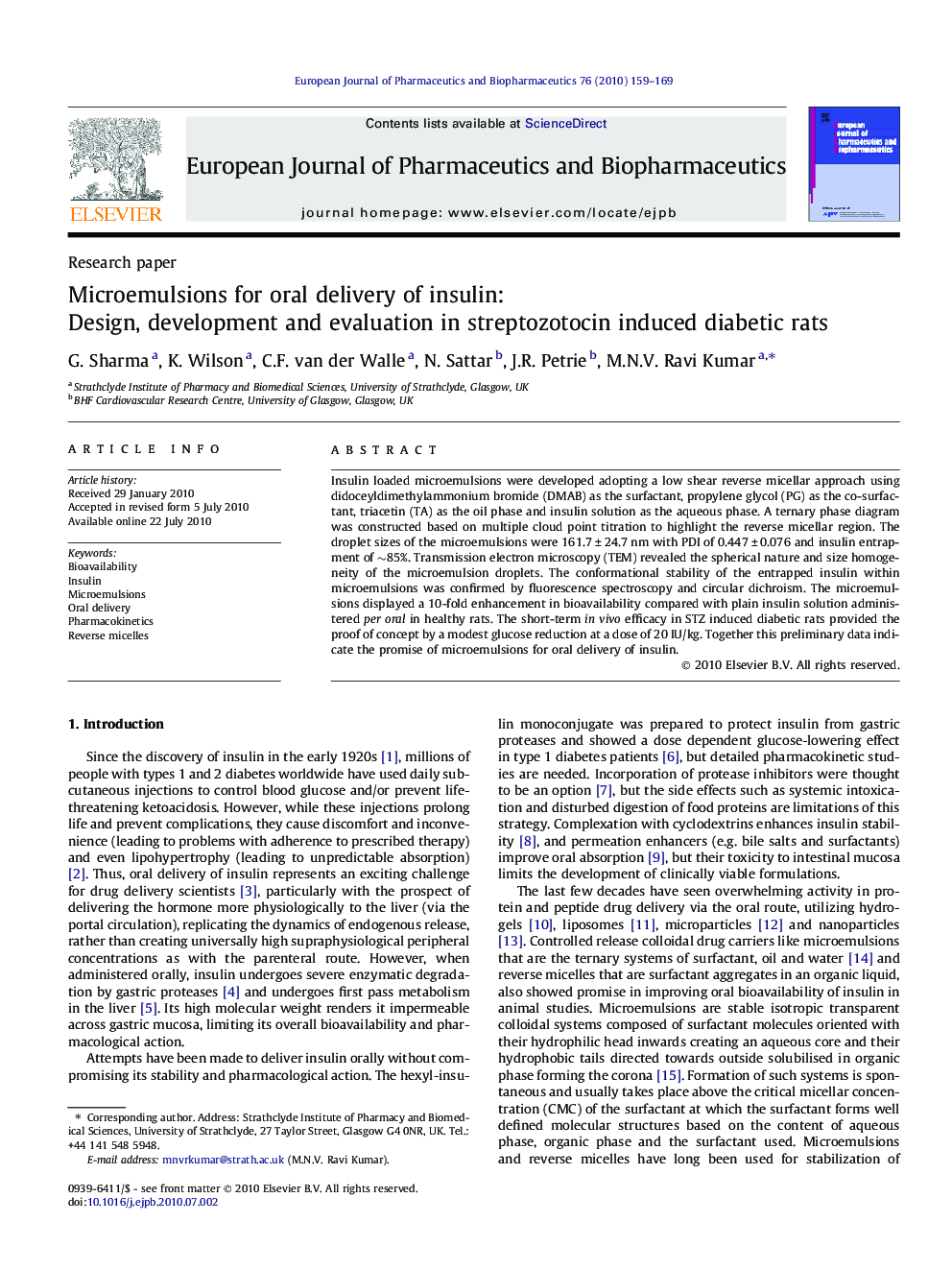| کد مقاله | کد نشریه | سال انتشار | مقاله انگلیسی | نسخه تمام متن |
|---|---|---|---|---|
| 2084309 | 1545375 | 2010 | 11 صفحه PDF | دانلود رایگان |

Insulin loaded microemulsions were developed adopting a low shear reverse micellar approach using didoceyldimethylammonium bromide (DMAB) as the surfactant, propylene glycol (PG) as the co-surfactant, triacetin (TA) as the oil phase and insulin solution as the aqueous phase. A ternary phase diagram was constructed based on multiple cloud point titration to highlight the reverse micellar region. The droplet sizes of the microemulsions were 161.7 ± 24.7 nm with PDI of 0.447 ± 0.076 and insulin entrapment of ∼85%. Transmission electron microscopy (TEM) revealed the spherical nature and size homogeneity of the microemulsion droplets. The conformational stability of the entrapped insulin within microemulsions was confirmed by fluorescence spectroscopy and circular dichroism. The microemulsions displayed a 10-fold enhancement in bioavailability compared with plain insulin solution administered per oral in healthy rats. The short-term in vivo efficacy in STZ induced diabetic rats provided the proof of concept by a modest glucose reduction at a dose of 20 IU/kg. Together this preliminary data indicate the promise of microemulsions for oral delivery of insulin.
Insulin-loaded microemulsions made by a reverse micellar approach improve the oral bioavailability of insulin with modest effects on blood glucose levels in diabetic rats.Figure optionsDownload as PowerPoint slide
Journal: European Journal of Pharmaceutics and Biopharmaceutics - Volume 76, Issue 2, October 2010, Pages 159–169